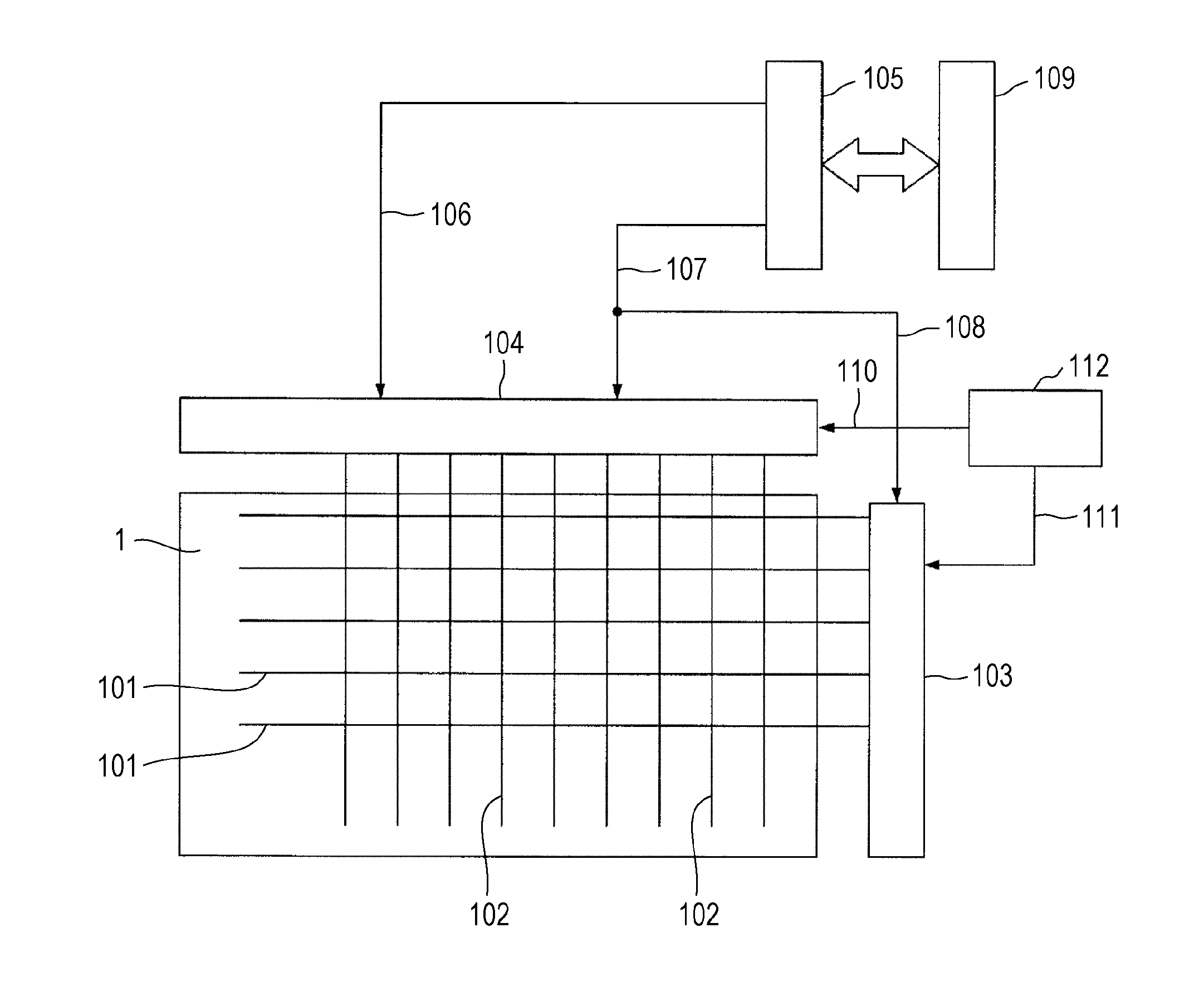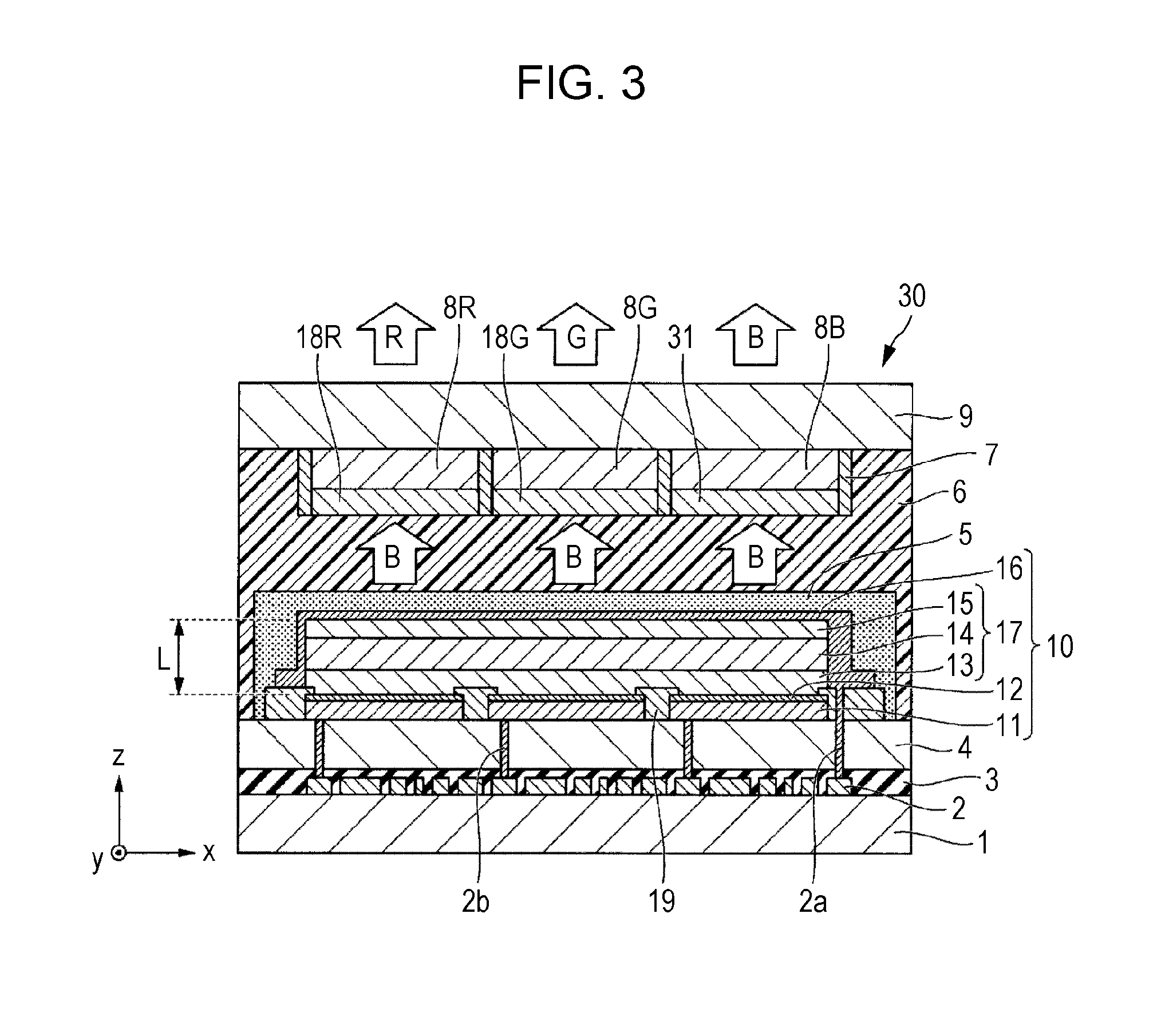Transition metal complex and organic light-emitting element using same, color-converting light-emitting element, light-converting light-emitting element, organic laser diode light-emitting element, dye laser, display device, illumination device, and electronic equipment
- Summary
- Abstract
- Description
- Claims
- Application Information
AI Technical Summary
Benefits of technology
Problems solved by technology
Method used
Image
Examples
synthesis example 1
Synthesis of Compound 1
[0275]Compound 1 was synthesized according to the following route.
Synthesis of Compound 1-B
[0276]1-Methyl-imidazole (Compound 1-A; 0.156 mol) was dissolved in 20 ml of THF (tetrahydrofuran) to obtain a solution. Dimethyldichlorosilane (Me2SiCl2) was added to the solution, followed by stirring at room temperature for 1 hour. Then, the solvent was removed from the reaction solution under reduced pressure. The residue was washed with 30 mL of hexane and the solid material was separated by filtration in a liquid separating treatment, followed by drying. As a result, Compound 1-B was obtained. Yield: 86%
Synthesis of Compound 1
[0277]Iridium (III) acetyl acetate (Ir(acac)3; 0.5 mmol) was put into dimethylsulfoxide (DMSO; 3 mL), followed by heating at 100° C. The DMSO solution (20 mL) of Compound 1-B (2.0 mmol) was added dropwise to the resultant solution over 12 hours. Then, the solution was stirred at 100° C. for 2 hours, and the solvent was removed from the reactio...
synthesis example 2
Synthesis of Compound 2
[0278]Compound 2 was synthesized according to the following route.
Synthesis of Compound 2-B
[0279]1-Methyl-imidazole (Compound 2-A; 0.156 mol) was dissolved in 20 ml of THF (tetrahydrofuran) to obtain a solution. Dimethyldichlorosilane (Me2SiCl2) was added to the solution, followed by stirring at room temperature for 1 hour. Then, the solvent was removed from the reaction solution under reduced pressure. The residue was washed with 30 mL of hexane and the solid material was separated by filtration in a liquid separating treatment, followed by drying. As a result, Compound 1-B was obtained. Yield: 86%
Synthesis of Compound 2
[0280]Iridium (III) acetyl acetate (Ir(acac)3; 0.5 mmol) was put into dimethylsulfoxide (DMSO; 3 mL), followed by heating at 100° C. The DMSO solution (20 mL) of Compound 1-B (2.0 mmol) was added dropwise to the resultant solution over 12 hours. Then, the solution was stirred at 100° C. for 2 hours, and the solvent was removed from the reactio...
synthesis example 3
Synthesis of Compound 3
[0281]Compound 3 was synthesized according to the following route.
Synthesis of Compound 3-C
[0282]4-amino-1,2,4-triazole (Compound 3-A; 0.1 mol), N,N′-Bis(dimethylaminomethylene)hydrazine dihydrochloride (Compound 3-B; 0.1 mol), and p-toluenesulfonic acid (0.8 g) was heated to reflux in toluene (50 ml) for 80 hours. Next, after adding dimethylamine (0.086 mol) to the reaction solution, the reaction solution was filtered. The obtained solid material was washed with ethanol, followed by drying in a vacuum. As a result, Compound 3-C was obtained.
Synthesis of Compound 3-E
[0283]4,4′-bi-1,2,4-triazole (Compound 3-C, 2.2 mol) and trimethyloxonium tetrafluoroborate (4.85 mol) were added to 10 mL of acetonitrile (MeCN) to obtain a mixed solution. After heating this mixed solution to reflux for 12 hours, the reactant was filtered. The resultant was washed with dichloromethane (CH2Cl2), followed by drying in a vacuum. As a result, Compound 3-E was obtained.
[0284]Yield: 85...
PUM
| Property | Measurement | Unit |
|---|---|---|
| Color | aaaaa | aaaaa |
| Structure | aaaaa | aaaaa |
| Current | aaaaa | aaaaa |
Abstract
Description
Claims
Application Information
 Login to View More
Login to View More - R&D
- Intellectual Property
- Life Sciences
- Materials
- Tech Scout
- Unparalleled Data Quality
- Higher Quality Content
- 60% Fewer Hallucinations
Browse by: Latest US Patents, China's latest patents, Technical Efficacy Thesaurus, Application Domain, Technology Topic, Popular Technical Reports.
© 2025 PatSnap. All rights reserved.Legal|Privacy policy|Modern Slavery Act Transparency Statement|Sitemap|About US| Contact US: help@patsnap.com



